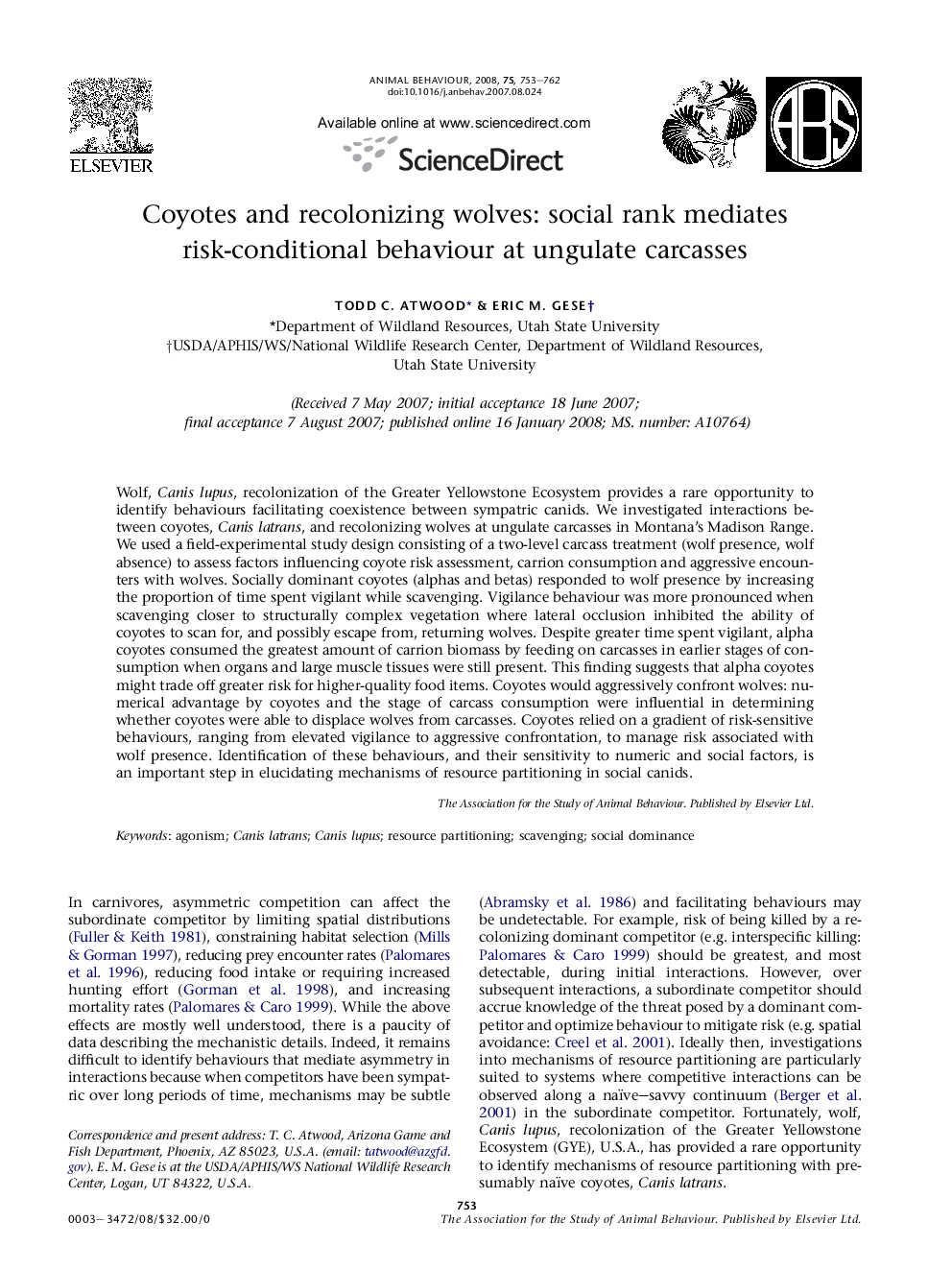| کد مقاله | کد نشریه | سال انتشار | مقاله انگلیسی | نسخه تمام متن |
|---|---|---|---|---|
| 2418895 | 1104360 | 2008 | 10 صفحه PDF | دانلود رایگان |

Wolf, Canis lupus, recolonization of the Greater Yellowstone Ecosystem provides a rare opportunity to identify behaviours facilitating coexistence between sympatric canids. We investigated interactions between coyotes, Canis latrans, and recolonizing wolves at ungulate carcasses in Montana's Madison Range. We used a field-experimental study design consisting of a two-level carcass treatment (wolf presence, wolf absence) to assess factors influencing coyote risk assessment, carrion consumption and aggressive encounters with wolves. Socially dominant coyotes (alphas and betas) responded to wolf presence by increasing the proportion of time spent vigilant while scavenging. Vigilance behaviour was more pronounced when scavenging closer to structurally complex vegetation where lateral occlusion inhibited the ability of coyotes to scan for, and possibly escape from, returning wolves. Despite greater time spent vigilant, alpha coyotes consumed the greatest amount of carrion biomass by feeding on carcasses in earlier stages of consumption when organs and large muscle tissues were still present. This finding suggests that alpha coyotes might trade off greater risk for higher-quality food items. Coyotes would aggressively confront wolves: numerical advantage by coyotes and the stage of carcass consumption were influential in determining whether coyotes were able to displace wolves from carcasses. Coyotes relied on a gradient of risk-sensitive behaviours, ranging from elevated vigilance to aggressive confrontation, to manage risk associated with wolf presence. Identification of these behaviours, and their sensitivity to numeric and social factors, is an important step in elucidating mechanisms of resource partitioning in social canids.
Journal: Animal Behaviour - Volume 75, Issue 3, March 2008, Pages 753–762